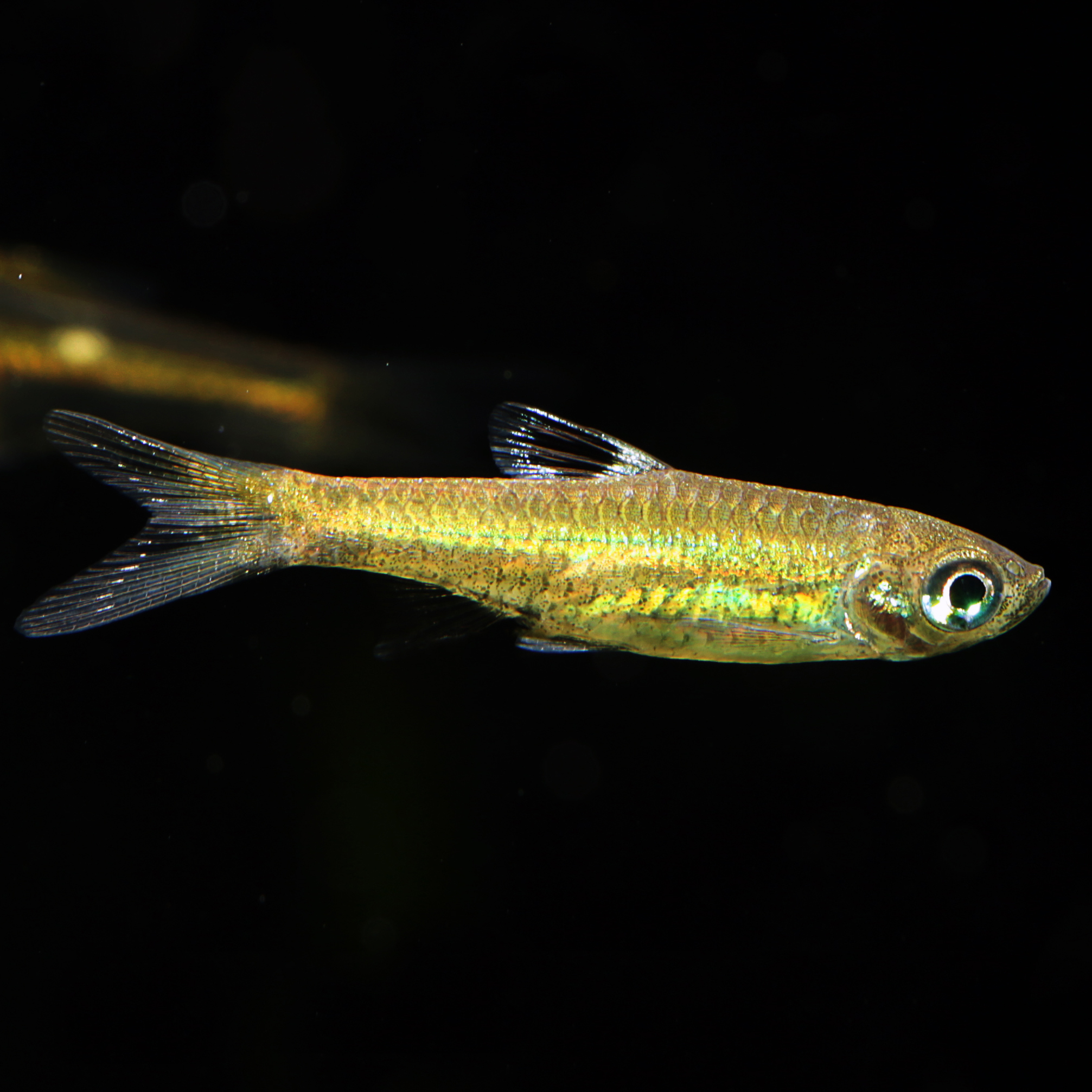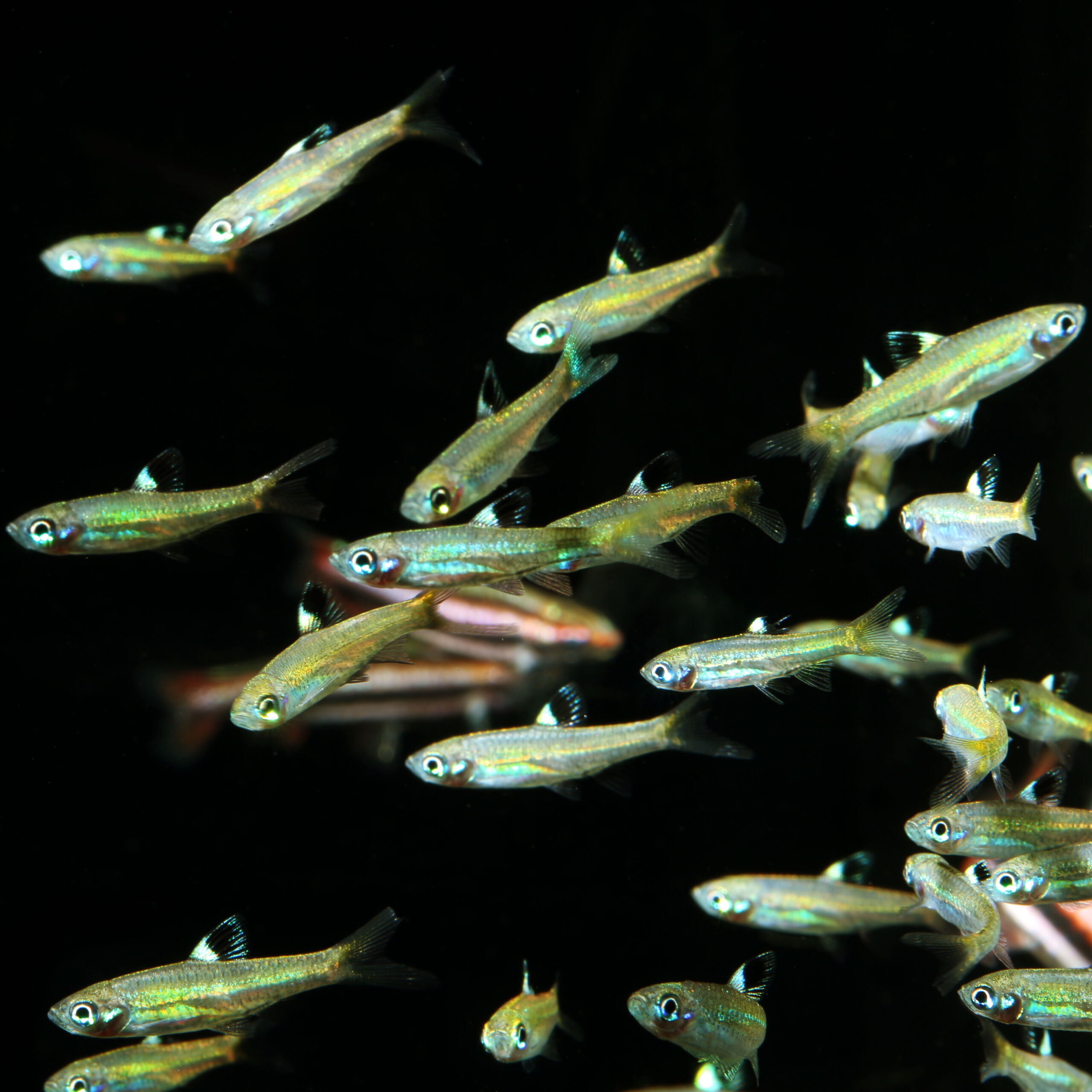Emerald Eye Rasbora
Rasbora dorsiocellata
With its iridescent blue eyes and shimmering gold body coloring, the Emerald Eye Rasbora is a real feast for the eyes.
- peaceful schooling fish from Asia
- beautiful coloring
- bright blue eyes
1 in stock
 Delivery in a few working days
Delivery in a few working days
 Free shipping from €60 across Austria
Free shipping from €60 across Austria





Important data
Product description & details
Rasbora dorsiocellata (syn. Brevibora dorsiocellata macrophthalma), also known as the Emerald Eye Rasbora or Eyespot Rasbora, is an approximately 3.5-4cm long rasbora that occurs on the Malay Peninsula and Sumatra in Southeast Asia. Its natural habitat is mainly flowing to stagnant waters. In terms of color, this pretty fish is characterized by a golden to slightly olive green body color, which, depending on the light, can also shimmer from metallic green to bluish, as well as a large black spot on the dorsal fin. The lower half of the iris is also colored iridescent blue.
Care in the aquarium
In terms of keeping, the Emerald Eye Rasbora can be classified as easy. As a somewhat timid fish, it wants to be kept in a group of at least 10 animals and requires dense background and edge vegetation to feel comfortable and safe. However, care should be taken to ensure that the lively rasbora has enough swimming space. An edge length of 60 cm is therefore the minimum. In the community tank it can be kept very well together with peaceful fish of approximately the same size, such as dwarf cory catfish or dwarf gourami.
Feeding
In nature, the Emerald Eye Rasbora feeds primarily on small insects and their larvae as well as small aquatic creatures such as crustaceans and worms. The primarily carnivorous (meat-eating) rasbora is particularly happy in the aquarium with live and frozen food types such as artemia, daphnia or enchytraea, but fish food suitable for tetras and rasboras is also readily accepted.
Sexual characteristics and breeding
Female Emerald Eye Rasboras are slightly more powerfully built and a little paler than the males. Soft water is ideal for breeding this beautiful rasbora. The willingness to spawn can be increased by giving more live food. Once a suitable spawning site has been found in the form of fine-feathered plants or moss cushions, the females lay the eggs between them, where they are fertilized by the male. As is typical for open spawners, no brood care is subsequently carried out. After about 24 hours, the fish larvae hatch from the eggs, which can initially be fed with dust food and infusoria and a little later with freshly hatched Artemia nauplii. Since the rasboras are spawning predators, it is best to separate the parents from the future offspring immediately after laying their eggs.






